The Beginner’s Guide to Microphones
To capture high quality audio you will need a microphone of some kind. But, for beginner’s especially, the subject can be confusing and overwhelming. If you want to know a bit about microphones without your head exploding with too much information, then where to start?
Well, here might be a good place. I was a sound engineer for about 20 years, working in the music industry. Since then, I have continued to use microphones for film, podcasts and general video-making.
I never had formal training, so have had to educate myself along the way. Therefore, I understand then need to learn some basics without being dropped in the deep end. Having knowledge of some general principles will help you when it comes to choosing a microphone.
Acoustics & Background Noise
Acoustics play a huge role in the quality of your audio recording. So, before you spend hours searching for a better microphone online, it’s worth thinking about the recording location. Above all, hard surfaces cause reflections (echo) which degrade your audio.
The damage done by hard surfaces will vary according to the microphone and where it is placed. But bear in mind a perfectly damped and sound-proofed room will create the environment for your $10 lavalier microphone to sound pretty great. Alternatively, an empty room with building work going next door will ruin the audio from your $1000 mic. Indeed, more expensive mics are often even better at picking up background noises.
Two Main Types of Microphone
Microphones have been designed for different situations and purposes, from recording violins in a concert hall to capturing a news reporter on location. Each microphone has it’s own characteristics and specifications, even if designed for the same job. And sound engineers will often argue at length over which slight variation is best.
But if you spend some time looking at different microphones, you will most likely find there are two main types on offer. The important difference between these mics is that one is powered by electricity, while the other isn’t.
Put in simple terms, with a dynamic mic it’s the force of the external sound which drives the microphone. If you have ever seen the internal cone of a loudspeaker playing music you will have noticed it bouncing or vibrating in and out as it produces sound waves. A microphone does the same, but in reverse – it “collects” sound waves and turns them into an electric signal.
So, whereas a loudspeaker “membrane” moves to create sound waves, a microphone is moved by sound waves to create a signal. Now, while a dynamic microphone uses the force of the sound to move the membrane which creates the signal, a condenser will help the membrane move with some added power. In this way, a condenser microphone is more sensitive to details in the sound.
DYNAMIC MICS
Dynamic mics are the workhorses of music venues and recording studios around the world. When I started out in music we had a (now legendary) Shure SM57. They are good quality, reliable and can take a lot of punishment. Anyone who has worked in a music venue or rehearsal studio knows how often mics are treated roughly.
In addition, when engineering a live band we are usually weighing feedback against loudness. Generally speaking, a dynamic mic like the SM57 will give you a louder output than a condenser mic without causing feedback. And as it doesn’t require (phantom) power, it’s a more versatile mic with less frequent malfunction issues.
Because dynamic microphones are simpler in their construction they are generally less expensive.
CONDENSER MICS
Condenser microphones are generally more sensitive than dynamic microphones. For this reason, studios prefer condenser mics (where they are less likely to get thrown around). They are of course used in other situations aside from music, like in radio, TV or film production.
Compared to the dynamic mic, the condenser has a thin membrane which gives it the greater sensitivity. But the mechanics of this design means it requires external power to work.
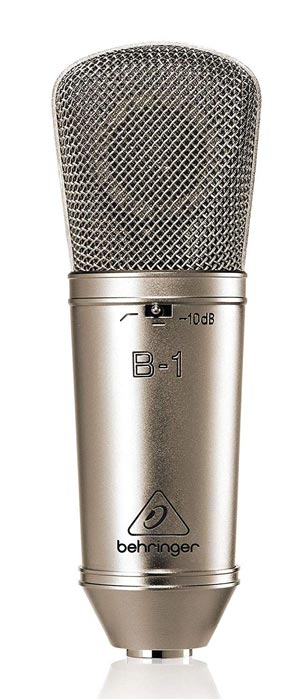
Small & Large Diaphragm
Condenser microphones come in 2 main varieties known as small diaphragm and large diaphragm. Small diaphragm condensers are usually slim, pencil-shaped and pick up audio from one end. Large diaphragm condensers are usually much bigger and collect audio from the side.
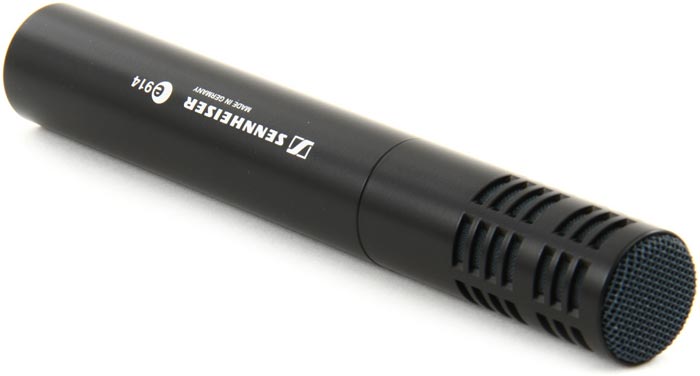
Pros & Cons
The main technical advantage of large diaphragm condenser microphones is their noise performance. Aside from that, the small diaphragm condenser had advantages such as greater accuracy and consistency across frequency range.
General applications
Dynamic microphones are best for voices that don’t necessarily need accurate and smooth reproduction, such as “in the field” interviews and live venues. What you lose in audio detail you gain in durability, reliability and reduced background noise levels.
Condenser microphones are good for most studio applications, including spoken and singing voice. While they are generally more expensive, you get extra sensitivity, warmth and presence. Unfortunately, they will also pick up more of that background noise.
Polar Patterns
Apart from sensitivity, how else does a microphone behave when recording sound? One feature is a microphone’s “polar pattern”. Generally speaking, this refers to the direction/s the mic is picking up sound from.
An omnidirectional microphone receives sound from all directions equally.
A cardioid microphone is more sensitive to sound coming from the front. Then less sensitive to sound from the sides and even less sensitive to sounds from the rear.
A figure of eight microphone picks up the sound from in front of the microphone and from the rear, but not the side.
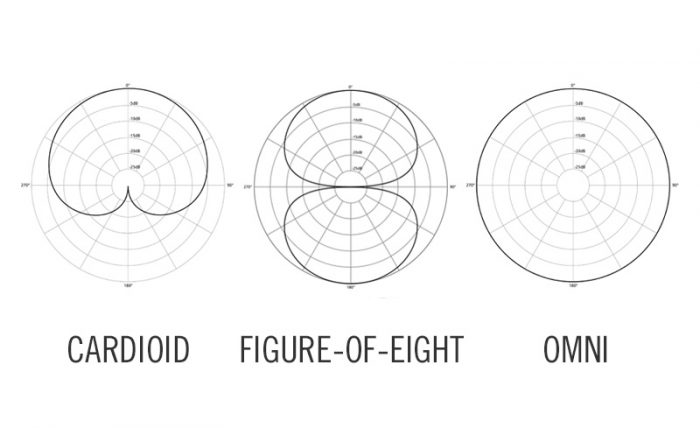
Lavalier (or clip on) microphones are usually omnidirectional. This is because the placement of the mic is very close to the sound source. Therefore, you want to reduce the drop-off of audio level when a subject moves their head. Also, it’s harder to aim a clip on mic in a specific direction.
The good old Shure SM57 (and similar mics) uses a cardioid pattern. In fact, most microphones will use some form of directional polar pattern.
Examples of uses for the figure of eight microphone are: recording two voices at the same time, a singing guitarist/instrumentalist or recording in stereo. Basically, any situation where you have 2 distinct sound sources to be captured by a single mic.
Supercardioid
A supercardioid microphone is like a cardioid pattern mic but the field is even narrower. These mics are useful when you have a single audio source (eg voice) and louder background noise to deal with. They are very resistant to feedback caused in a live music situation. Example:
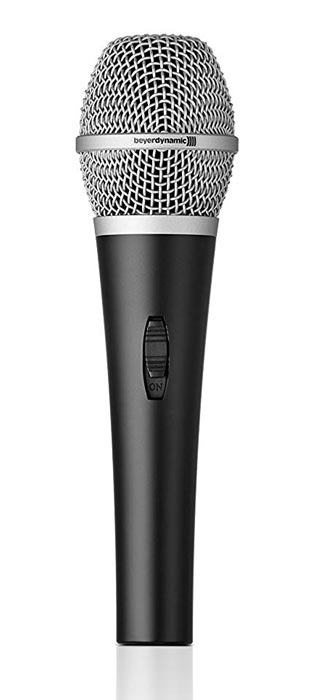
Hypercardioid
A hypercardioid microphone has an even narrower pickup field than the supercardioid. Example:

Lobar
The lobar microphones is the most highly directional. An example is a “shotgun” microphone, often used in film and TV production. Example:
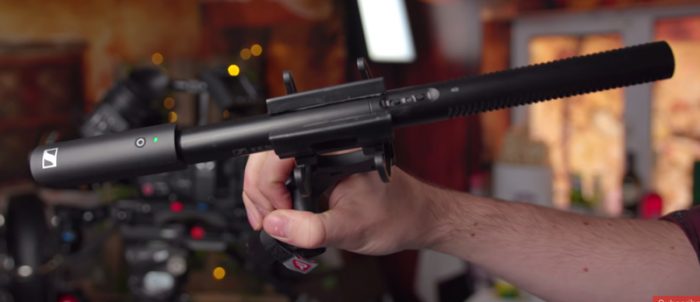
Note, some mics are able to switch between different polar patterns. These are called “multi-pattern microphones”.
So that’s a basic overview of microphones to get you started. Hopefully, you will now have a grounding of knowledge which will help you choose the right mic for the situation in which you will be recording audio.
Read more: Best Microphones for Smartphone Filmmaking
Eager to learn more?
Join our weekly newsletter featuring inspiring stories, no-budget filmmaking tips and comprehensive equipment reviews to help you turn your film projects into reality!
Simon Horrocks
Simon Horrocks is a screenwriter & filmmaker. His debut feature THIRD CONTACT was shot on a consumer camcorder and premiered at the BFI IMAX in 2013. His shot-on-smartphones sci-fi series SILENT EYE featured on Amazon Prime. He now runs a popular Patreon page which offers online courses for beginners, customised tips and more: www.patreon.com/SilentEye


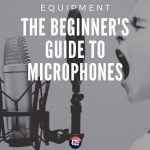
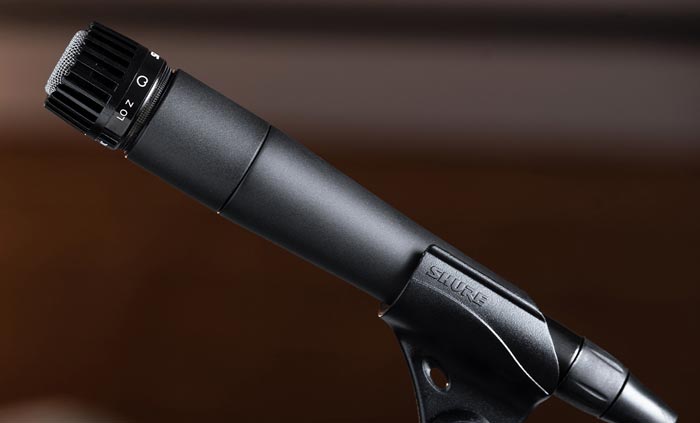
Hi Simon,
1) In this video you demonstrate settings of FilMiC on a Boya mic https://www.youtube.com/watch?v=sdWEgUJHA1g Still, it is not in the list of the mics you have on your website. Are Boyas so bad? (I just recently bought Boya BY-MM1 for street filming).
2) What is the music you use in this video? It is just hypnotesing and I suspect another reason I watch this video (and other videos of yours) in addition to the superb content is because of it.
Many thanks
Alexander
hi Alex. I do include the BOYA mic in my lists of mics for smartphone. It’s good for the price. Recently I switched to use the SYNCO though. Thanks for watching!